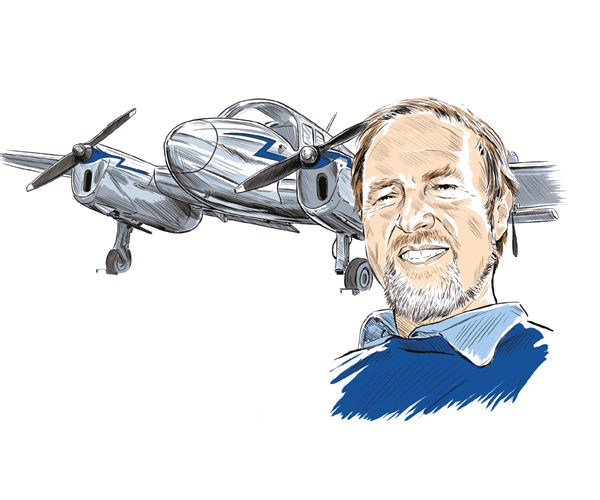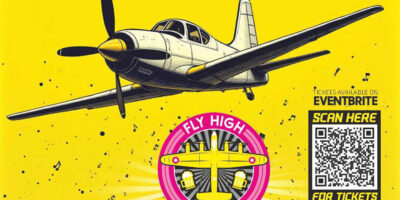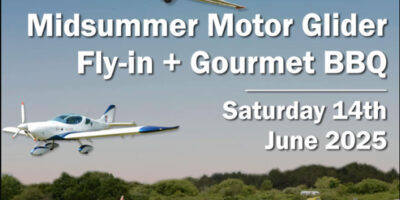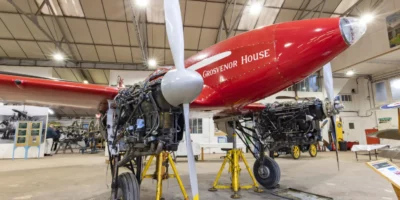My recent trawl through the memory banks in search of info on Robins fetched up a fair few memories, not least about the airfield of Dijon-Darois where most were made. It’s been a regular visit most years ever since I’ve had a pilot’s licence, because the other essential detail about Darois Airfield is the proximity of Circuit Dijon-Prenois. I’ve had a motor sport licence for even longer…
Dijon hosted the French Grand Prix between 1974 and 1984 and it remains a gloriously old-fashioned switchback affair laid over the edges of the vast Val Suzon National Park. That and the wonderful old city of Dijon which lies down in the valley to the south and which the French see as the country’s gastronomic capital. Any one of these would be a good reason to visit, but all three have always offered a rare annual treat, sometimes two…
“Dijon-Darois is a magical place in a wonderful part of France”
Can’t contemplate it at the moment of course, but it’s obviously better whenever I’ve gone by air. Dijon is about 400 miles in total from North Coates to Darois, maybe a bit more if I don’t feel like routing direct from Clacton to Calais (which means about 70 miles over sea, and enough altitude to clear the danger areas east of Margate). A lot, as ever, depends on the weather, but the alternative is to thread the labyrinth between Stansted, Heathrow and Southend, a route which grows ever more complicated by the year. On the other side of the water, Lille is usually pretty helpful, then a slight kink to pass Paris and on towards Troyes and over the Burgogne region’s vast expanses of rolling green. Every time I do it I’m reminded of France’s sheer size – land at Darois and there’s still another 320 nautical to the Pyrenees and the Spanish border.
Dijon-Prenois circuit is only three miles from Darois, and the scene of that fantastic head-banging, wheel-banging 1979 duel between French-speaking chargers Rene Arnoux and Gilles Villeneuve – the former in Renault’s new turbo V6, the latter in a naturally aspirated 3-litre Ferrari flat-12. Renault was the only adopters of the 1.5 litre boosted option in the then current Formula One, using brutal mechanically managed turbos the size of dustbins and lag you measured with a stopwatch, followed by power delivery like a Howitzer. The other teams would soon follow Renault’s lead though. The scrap is legendary and it’s easy to forget that Jean-Pierre Jabouille had already disappeared up the road to win the French Grand Prix… in a turbo Renault. I’ve had a few like that at Dijon, albeit at a slightly slower speed, but a lot has to do with the nature of a track, the likes of which they don’t make any more.
Darois Airfield is out of a similar mould, only more on the level, or nearly… It’s still the home of Robin aircraft manufacture, even if the man has gone and the company which still bears his name is under different ownership. It’s a wonderful, rambling place, 1,600ft above sea level (same as Spa), boasting a 750 metre hard runway that gently rises and falls along its length. At the eastern threshold is a big smart hangar, home to the Patrouille Cartouche Doré, the French Army military aerobatic team, which when I last looked, operated Pilatus turboprops.
A bit further along, there’s less formal, more corrugated accommodation for numerous warbirds – there was a Sea Fury and a Corsair on the apron last time I was there. Then the line of hangars turns south, accessed through the houses of the village. Then there’s DynAero, Christophe Robin’s factory where Pierre’s son made the MCR range of composite aircraft. That’s Michel Colomban and (Christophe) Robin, to continue the moniker theme. Another undulating line of corrugated hangars runs to the west, bookended by a smart whitewashed clubhouse. There’s a car park, then, situated on the other side of the main Route de Troyes, there’s the Robin factory and a showroom which would once have displayed shiny new DRs. Not so busy since the halcyon days of the 1970s. Aircraft leaving the factory still have to cross the busy main road via a large swing gate. Imagine that too… On one of my racing forays, I managed to blag a brief look inside the factory, brandishing a press card and using my best schoolboy French to tell a story of a visiting journalist and so on.
There was a snapshot of an already bygone age, with men in brown smocks brandishing spokeshaves, the reek of glue and dope heavy in the air. Not so surprising, given a moment’s thought. The wooden Robins were developed from the 1950s original and structurally they haven’t changed, so neither had the method of construction. Ed the editor has found a picture of a metal-winged DR400, and the hundreds of pimply rivets just look wrong… Outside on the factory’s scrapheap lay the stretched metal fuselage of the 4+2 HR, which never went into production. It was later used as a test bed for the PRV V6 automotive conversion, which never went into production either.
A magical place in a wonderful part of France. Maybe next year I’ll be able to fetch a bent-wing aeroplane back to its place of birth. We’ll just have to hope…
Working vintage aircraft and cars make Mark particularly happy.
[email protected]







